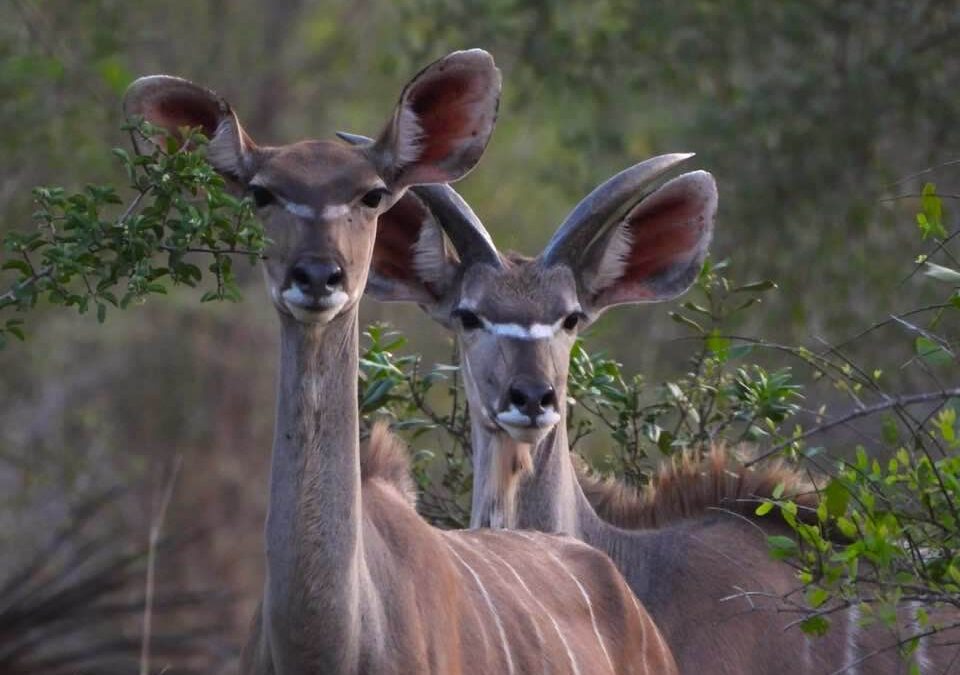Photo – Beto Tenente
●The Gorongosa Restoration Project recently received a Biodiversity Conservation Award from Banco Bilbao Vizcaya Argentaria (BBVA) Foundation. The project received the award for the successful reconstruction of Gorongosa National Park after the devastation of a 15-year civil war, with outstanding results in large mammals such as elephants, lions, buffalo and antelopes.
The great naturalist Edward O. Wilson described Mozambique’s Gorongosa National Park as “a window into eternity,” a tribute to the astonishing biodiversity he discovered during his visits to the site on three occasions between 2011 and 2014. But this wild paradise was edge of the abyss. As a result of the civil war that ravaged the country for 15 years (1977-1992) after its independence from Portugal, Gorongosa’s wildlife suffered a catastrophic decline.
Indeed, the first post-conflict aerial census carried out in 1994 confirmed losses of 90-99% in its large mammal populations, including elephants, buffalo, hippos and zebras. Today, thanks to the work of the Gorongosa Restoration Project, awarded the World Biodiversity Conservation Prize, the Mozambican park and its Sustainable Development Zone – totaling more than 1,300,000 hectares – have recovered much of their ecological integrity .
“When we started, there were less than 10,000 large animals in the Park. There are now more than 100,000, so we have increased their number by a factor of ten,” said Gorongosa Science Director Marc Stalmans.
The Mozambican park and its Sustainable Development Zone – totaling more than 1,300,000 hectares – has recovered much of their ecological integrity.
This success is due to the partnership signed in 2008 between a private foundation, created by American philanthropist Greg Carr with the aim of restoring Gorongosa Park, and the Mozambican government. The project was mainly based on the effective protection of wildlife through surveillance by an extensive network of rangers, as well as a reintroduction program for species that were almost exterminated, such as buffaloes, leopards, hyenas, wild dogs and cattle.“In the most serious cases, we achieved excellent results with the reintroduction of species, but others managed to recover on their own.
“If you give nature a chance, with good protection, it can recover spectacularly”, observes Stalmans. “In the case of lions, for example, when the project began there were less than 30 individuals. Today the population numbers more than 210.”
At the same time, the project promoted scientific research into the extraordinary biodiversity of Gorongosa, led by the Edward O. Wilson Laboratory, named in honor of the renowned Harvard Professor of Entomology and laureate of Frontiers of Knowledge in Ecology and Conservation Biology in 2011.
Another success of the Gorongosa Restoration Project highlighted by the jury was the active involvement of the local community, achieved through the recruitment of young people into its network of inspectors and through an ambitious development program that guarantees their access to basic needs, such as water drinking water, along with housing rehabilitation and the introduction of sustainable crops such as coffee. In fact, more than 50% of the project budget goes to health, agriculture and education projects, benefiting more than 200,000 people.
Many of these actions focus on girls’ education, particularly their inclusion in secondary education, with a direct impact on the age at which they give birth, the number of children they have and, ultimately, the control they have over their own lives. lives. Additionally, the creation of a Masters in Conservation Biology program for Mozambican students is creating new high-level technical jobs for citizens across the country.
“An essential part of our work is to improve the lives of people who live around the Park,” explains Stalmans, “because many of the problems of overexploitation of natural resources that threaten biodiversity are due to poverty and lack of knowledge. Our focus on economic development and local community education is a key factor in the success we have achieved. We hope that our model can serve as an inspiration for other African countries, as the jury noted.”
BBVA is one of the world’s largest financial institutions and operates in many countries, including Spain, Portugal, Mexico, South America, Turkey, Italy, and Romania. Learn more: https://www.biophilia-fbbva.es
